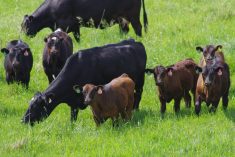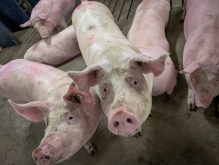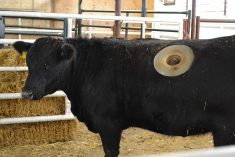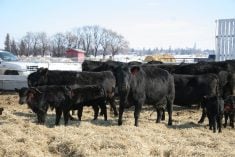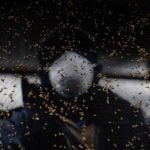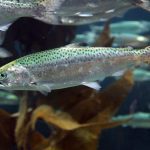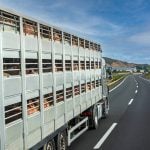Glacier FarmMedia – When attempting to get an accurate gauge of global food security and protein sufficiency, metrics matter.
The food sufficiency metric must reflect what each type of food production supplies, including environmental benefits, social structures or sustainability credentials, said Vaughn Holder, ruminant research director with Kentucky-based nutrition company Alltech.
“The metrics are important when we’re trying to match up protein supply with protein requirement. You have to use the same metric,” Holder said when speaking to Ontario beef farmers earlier this year.
Read Also

Grazing ‘sweet spot’ boosts pasture performance
Timing-focused approach to pasture management touted to boost forage growth, livestock gains while also cutting farmer labour and inputs
For example, land and freshwater use and GHG measurements position wheat, rice and maize as the most efficient with the lowest GHG production. However, Holder said measuring the plant’s protein digestibility or amino acid production changes the story.
A paper entitled “The Population Protein Intakes and Food Sustainability Indices: The Metric’s Matter,” released in June 2021, dissected plant and animal-based protein contributions based on population protein intake and associated environmental metrics of 190 countries and territories.
Initial results indicated almost every country had sufficient protein supply with current plant and animal production.
“Protein isn’t everything, but it’s a pretty important measurement of our sufficiency of food production from a global basis,” Holder said. “Problem is, this is crude protein, right? And our requirement for protein is in digestible amino acids.”
When corrected for plant-based protein digestibility and amino acid profile, 103 countries didn’t meet the requirement, as measured by the Digestible Indispensable Amino Acid Score. Eliminating animal protein from the data set resulted in a significant deficit.
“So, a totally different narrative when you correct for the appropriate metrics. Wheat, rice, maize, when you don’t correct it, look like that’s the way to go for the future of food,” Holder said.
“But when you correct those for the amount of food they’re actually providing, you end up with rice and maize being more greenhouse gas intensive than eggs and pork.”
The metric indicates production of eggs, pork and milk use less fresh water and about the same land per crude protein production as do rice and maize.
This is a direct contrast to the United Nation’s agenda that promotes plant-based proteins, especially when the world needs to increase food supply, said Holder.
Protein isn’t everything
A 2021 study, conducted by Ty Beal on the environmental impacts of food based on nutrient density, turned the current plant-based narrative on its head.
“Beef liver is the most resource or greenhouse gas un-intensive food you can eat when it comes to these nutrients (iron, zinc, calcium, folate, vitamins A and B12),” said Holder. Whole grains and refined grains are the worst.
Only ruminants produce more human-edible protein than they eat, with cattle creating 2.8 times the protein by using 14 kilograms of feed to produce one kilogram of beef. The ruminant’s diet consists of byproducts from grains and cereals unsuitable for human consumption.
Holder said on a yearly average, North American dairy cattle eat 40 million tonnes of byproducts (like distillers’ grains) and turn unrecoverable nutrients into food products.
Without ruminant consumption, the derivatives would be composted or sent to landfills, where off-gas would create five to 50 times the methane than if put through a cow.
He estimates the byproduct carbon footprint would be twice the enteric methane footprint of dairy cows in North America.
He also suggested that applying the fossil fuel conversation to agriculture’s biological cycle gives a false impression because it only measures methane emissions.
Soil and grasses naturally produce methane and CO2 emissions when uneaten grasses ferment and soil off-gasses. Then the methane breaks down in 10 to 12 years and returns carbon to the soil in a net carbon emission cycle.
A study of Buck Island in Florida, done by ecologists and animal scientists, measured the environmental consequences of the ruminant production cycle from an ecosystem standpoint.
“Ruminant nutrition is measured by everything that goes in and everything that comes out, and we say that’s the model,” he said. “That’s not the model. The ecosystem is the model.”
Researchers found the cattle operation on Buck Island, which is submerged half the year, is net sequestering. Although emissions were slightly higher with cattle on the land compared to not, the increase in carbon storage was substantial. Without the cattle, carbon sequestration was significantly lower.
Holder said the value of ecosystem service provided by cattle through cereal and grain consumption, which prevents off-gassing and increases carbon sequestration, should be noted as an industry strength.
“When we’re trying to supply food to the world, it’s kind of important that we measure this instead of how much grass they ate versus how much meat they put out,” Holder said. “Because the grass is not on our menu and, if we take it off their menu, we’re not going to have anything on ours.”
Processing can’t replace production
The current narrative positions plant-based and alternative proteins as meat replacements in the food system, said Holder, but food production can’t be replaced with food processing.
“They are not producing food. If you look at the ingredients list, these exist within our food systems already and are accounted for in our food production measures,” he said. “Just because you found a way to mix together plants to make them taste like meat doesn’t mean you’ve revealed a new source of nutrients that can enter our food supply.”
Michael Rogers, a University of Guelph researcher, released a study measuring plant-based burgers’ contribution to food security versus beef burgers through nutrient absorption and microbial gut population impact.
The high glycemic and lipemic index of the plant-based burger created a spike in glucose and fat and increased clostridium and citrobacter levels.
Holder said citrobacter is a pro-inflammatory associated with irritable bowel syndrome and gastroenteritis.
The beef burger increased proactive bacteria species, some of which offer protection against diarrhea and produce beneficial short-chain fatty acids.
Producers and commodities need vital ammunition to argue against proposed food system changes and the consequences, said Holder.
“We don’t just need more food. We need more real food. That is clear,” he said.
Holder said livestock producers and associations need to increase advocacy for their sector and talk about what they’re doing, why and the positive impact it makes.
– This article was originally published at Farmtario.



